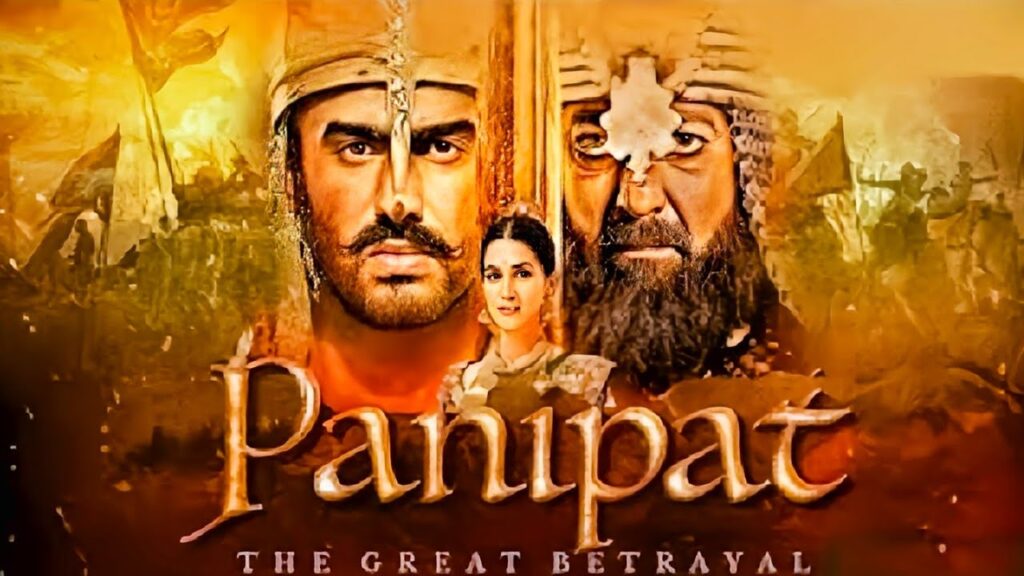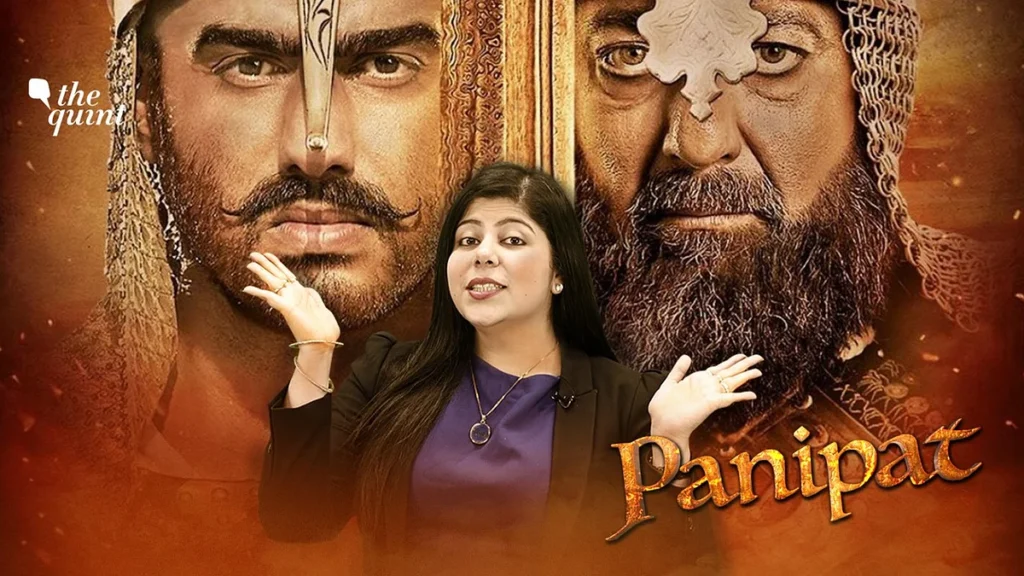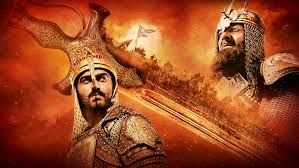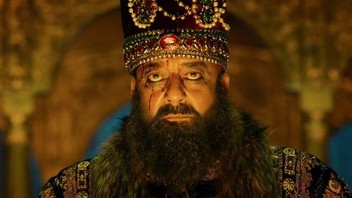Panipat (2019) – The Historical Epic of Valor, Sacrifice, and Legacy

Introduction
Indian cinema has always held a fascination for history. Stories of empires, kingdoms, and warriors continue to inspire filmmakers who attempt to recreate those times on the big screen. Among the many historical dramas released in recent years, Ashutosh Gowariker’s Panipat (2019) stands out for its ambition. Known for grand period dramas such as Lagaan and Jodhaa Akbar, Gowariker once again ventured into history to narrate the story of one of the most decisive battles in Indian history — the Third Battle of Panipat fought in 1761.
The film, starring Arjun Kapoor, Kriti Sanon, and Sanjay Dutt, brought together themes of patriotism, bravery, betrayal, and cultural conflict. While Panipat opened to mixed reviews, it holds significance as one of the few Hindi films that attempted to recreate the Maratha-Afghan clash that shaped the subcontinent’s history.
This article takes a deep dive into Panipat, analyzing its historical context, storyline, cinematic execution, performances, music, reception, and legacy.
Historical Background

The Third Battle of Panipat
The battle was fought on 14 January 1761 between the Maratha Empire, led by Sadashivrao Bhau, and the invading forces of Ahmad Shah Abdali (Durrani), the ruler of Afghanistan.
- The Marathas, at the height of their power, had expanded northward and posed a challenge to Abdali’s ambitions.
- The conflict was not just about territorial control but also a clash of civilizations — Indian powers versus foreign invaders.
- Despite their courage and strategy, the Marathas suffered a devastating defeat, marking one of the bloodiest battles in Indian history.
This event reshaped Indian politics. The Maratha loss weakened indigenous resistance to British expansion, indirectly paving the way for colonial dominance in the subcontinent.
Plot Summary of Panipat
The film closely follows this historical narrative, with some creative liberties.
Act 1 – Rise of the Marathas
The film begins with the Maratha Empire’s glory under Peshwa Balaji Baji Rao (played by Mohnish Bahl). His cousin, Sadashivrao Bhau (Arjun Kapoor), emerges as a brave and loyal commander. Sadashiv wins battles, strengthens the empire, and falls in love with Parvati Bai (Kriti Sanon), the widow of Vishwas Rao. Their romance adds a personal dimension to the otherwise political story.
Act 2 – The Threat of Abdali
Meanwhile, the Afghan ruler Ahmad Shah Abdali (Sanjay Dutt) sets his eyes on India. Ruthless and ambitious, Abdali invades the northern territories, challenging the Marathas’ dominance. Recognizing the danger, the Peshwa sends Sadashiv to confront him, appointing him commander-in-chief of the Maratha army.
Act 3 – The Journey and Struggles
Sadashiv leads his army northwards, forming alliances with local rulers. However, political betrayals weaken the Marathas. The Rajputs, Jats, and other regional powers either hesitate or refuse to support them, leaving the Marathas isolated against Abdali’s well-prepared forces.
Act 4 – The Battle of Panipat

The climax showcases the Third Battle of Panipat. Despite being outnumbered and betrayed, the Marathas fight valiantly under Sadashiv’s leadership. Abdali’s forces eventually overwhelm them, leading to massive casualties. Sadashiv, though mortally wounded, dies a hero, leaving behind Parvati Bai in grief.
The film closes with Parvati narrating the tragic aftermath, emphasizing the Marathas’ bravery despite defeat.
Character Analysis
Sadashivrao Bhau – Played by Arjun Kapoor
Arjun Kapoor portrays Sadashivrao as a brave, principled leader who values honor above all. His performance emphasizes duty, loyalty, and patriotism. Critics noted that while Kapoor tried earnestly, his dialogue delivery sometimes lacked the fire expected of such a legendary figure.
Parvati Bai – Played by Kriti Sanon
Kriti Sanon shines in her role, bringing dignity and emotional depth to Parvati Bai. She is not just shown as a passive consort but as a supportive, intelligent partner who shares Sadashiv’s burdens. Her presence softens the film’s war-heavy narrative, balancing action with emotional gravitas.
Ahmad Shah Abdali – Played by Sanjay Dutt
Sanjay Dutt’s Abdali is menacing, ruthless, and regal. His portrayal as the Afghan invader adds intensity to the film. While some critics felt his screen presence could have been more dynamic, he successfully embodies the fear and ambition of Abdali.
Supporting Cast
- Peshwa Balaji Baji Rao (Mohnish Bahl) – Portrayed as a wise but weary leader.
- Shamsher Bahadur (Sahil Salathia) – Adds youthful energy as a Maratha warrior.
- Najib-ud-Daula (Mantra) – Depicted as a cunning ally of Abdali who betrays Indian interests.
Themes in Panipat
1. Patriotism and Duty
The central theme is loyalty to the motherland. Sadashiv’s unwavering commitment to defending India, despite overwhelming odds, defines his character.
2. Betrayal and Politics
The film highlights how betrayal from potential allies weakened the Marathas. Political fragmentation becomes the reason for their downfall.
3. Love and Sacrifice
The romance between Sadashiv and Parvati underscores personal sacrifice. Their love story humanizes the otherwise war-driven narrative.
4. Cultural Clash
The conflict is depicted as more than just a territorial war — it is shown as a struggle to protect Indian identity from foreign domination.
Direction and Cinematic Style
Ashutosh Gowariker is known for grandeur, and Panipat reflects his strengths and weaknesses.
- Strengths: The attention to historical detail, costume design, and battle sequences is commendable. Large-scale sets recreate the 18th century with authenticity.
- Weaknesses: The pacing drags in the first half, and the screenplay sometimes feels stretched. Certain dialogues lack the punch needed for a war epic.
Despite these flaws, Gowariker’s vision ensures the film remains visually captivating.
Music and Soundtrack
Composed by Ajay-Atul, the music blends traditional Marathi folk with cinematic grandeur.
- “Mard Maratha” – A celebratory number showcasing Maratha pride.
- “Sapna Hai Sach Hai” – A romantic ballad highlighting Sadashiv and Parvati’s love.
- “Mann Mein Shiva” – A powerful, energetic war cry, symbolizing the warrior spirit.
The background score, infused with dhols and traditional instruments, enhances the battle scenes and emotional moments.
Cinematography and Visuals
Cinematographer C. K. Muraleedharan delivers sweeping visuals of deserts, palaces, and battlefields. The battle of Panipat is shot on a massive scale, with thousands of soldiers, horses, and war formations recreated with VFX. While some critics felt the CGI looked inconsistent, the overall spectacle is impressive.
Audience Reception
Critical Reviews
Critics were divided:
- Positive: Many praised the film’s scale, music, and Gowariker’s attempt to bring history alive. Kriti Sanon received widespread acclaim for her performance.
- Negative: Some reviewers criticized the screenplay, calling it too lengthy. Arjun Kapoor’s restrained performance was also debated.
Box Office Performance
Made on a budget of around ₹100 crore, the film collected only about ₹49 crore worldwide, making it a box office failure. Its underperformance was attributed to stiff competition from Pati Patni Aur Woh (released on the same day), slow pacing, and limited audience interest in historical epics at the time.
Controversies
Panipat faced several controversies upon release:
- Depiction of Maharaja Suraj Mal – The Jat community protested, claiming the film misrepresented Suraj Mal as a betrayer of the Marathas. Screenings in some regions were stopped temporarily.
- Portrayal of Abdali – Some Afghan critics argued that Abdali was shown as overly villainous, ignoring his statesmanship.
- Historical Accuracy – Historians pointed out creative liberties, such as dramatized dialogues and exaggerated war sequences.
These controversies impacted the film’s smooth release.
Cultural Impact and Legacy
Though Panipat struggled commercially, it holds cultural importance:
- It reintroduced the Third Battle of Panipat to younger generations unfamiliar with the event.
- It highlighted the bravery and sacrifices of the Marathas, adding to Indian historical consciousness.
- Despite mixed reception, it stands as one of the few Bollywood films attempting to showcase large-scale historical warfare.
Conclusion

Panipat is a film that blends grandeur with tragedy. While it may not have reached the heights of Gowariker’s earlier masterpieces like Lagaan or Jodhaa Akbar, it remains an ambitious attempt to depict one of the most decisive battles in Indian history.
The film teaches us valuable lessons — that unity is essential for survival, that betrayal can shatter empires, and that true patriotism lies in sacrifice. Sadashivrao Bhau’s courage, Parvati Bai’s devotion, and the Marathas’ valor make Panipat more than just a movie; it is a cinematic reminder of India’s rich and complex past.
In the end, Panipat resonates as a tribute to unsung heroes who gave their lives for the land, even when destiny denied them victory. Its legacy lies not in box office numbers but in its attempt to immortalize history on the big screen.
